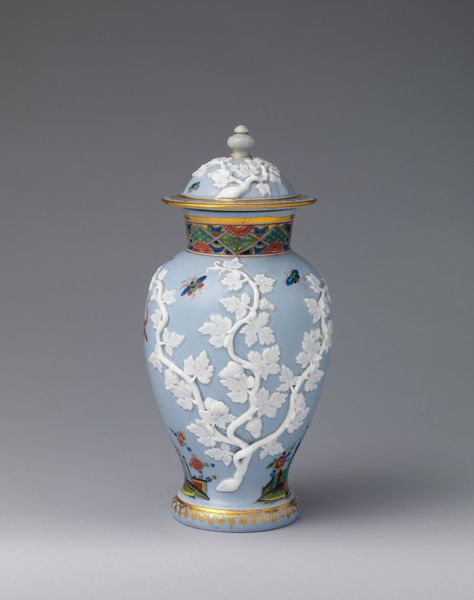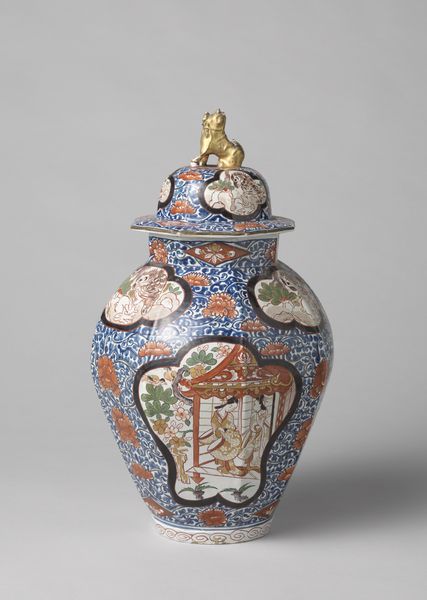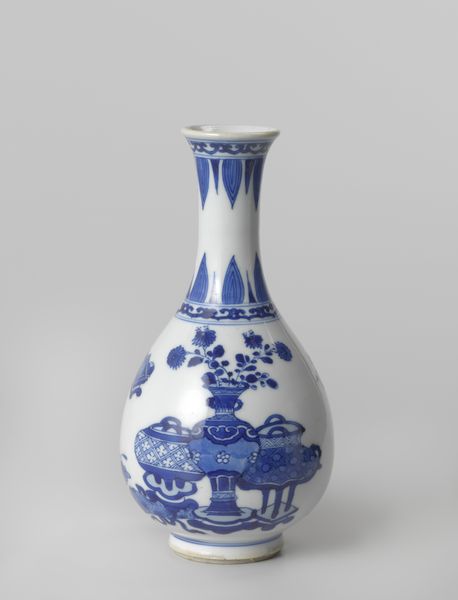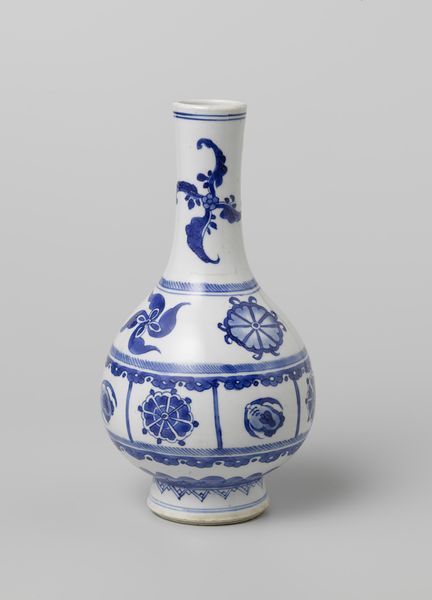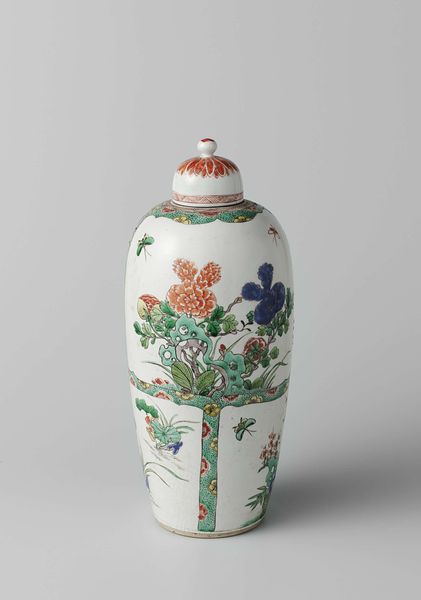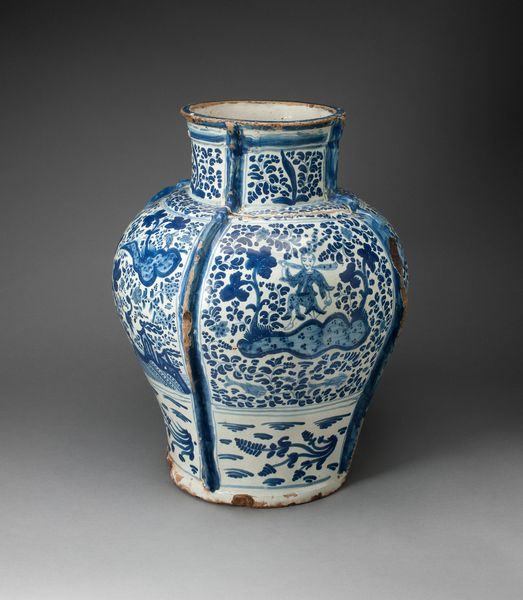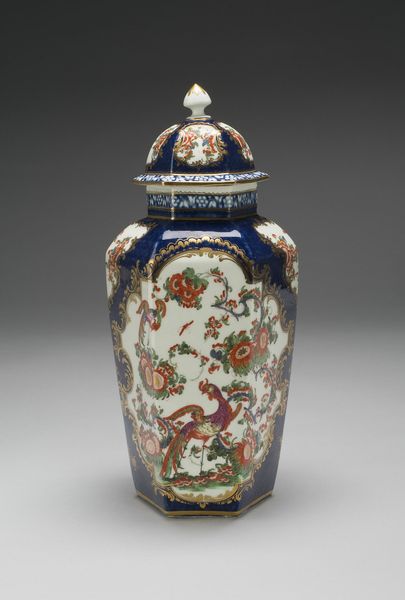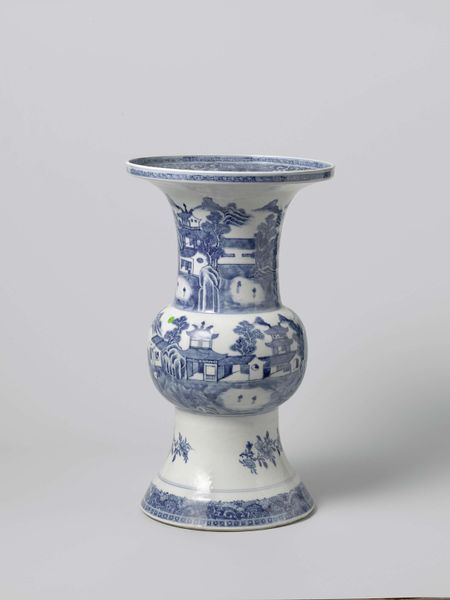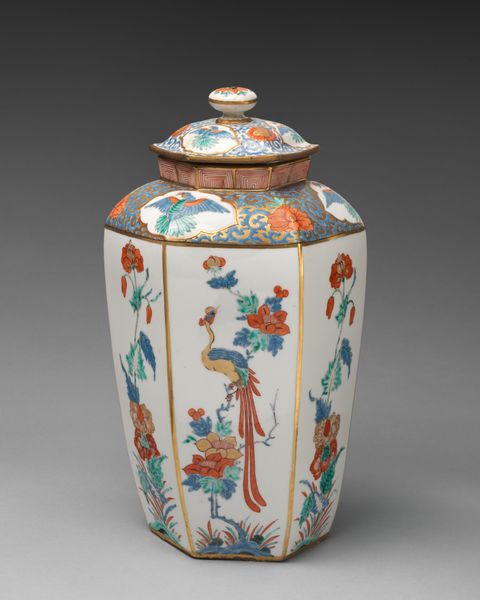
ceramic, earthenware
#
pottery
#
asian-art
#
ceramic
#
earthenware
#
ceramic
#
decorative-art
Dimensions: height 23.5 cm, diameter 17.7 cm, diameter 12.0 cm
Copyright: Rijks Museum: Open Domain
Curator: Well, hello there. The artistry we're about to explore is a feast for the eyes! This lidded jar, known as "Dekselpot", was crafted around 1886 by Petrus Regout, made with earthenware, a beautiful type of ceramic. Editor: Oh, I see what you mean. At first glance, it's intensely decorative; almost overwhelming. There's a vibrancy to the color palette. Curator: It really invites discussion, doesn’t it? The form itself speaks to me of craft and purpose. Looking closely, you can really appreciate the hand that shaped it. Editor: Yes, the shape is classic. The body seems built to show off its symbolic designs. I am captivated by the motifs, specifically the birds hidden amongst floral designs inside those medallion-like panels, almost mimicking Japanese porcelain art. Curator: Indeed, Regout clearly drew inspiration from Asian ceramics, reflecting the trend for Japonisme that was sweeping Europe. Notice the transfer-printed patterns; the application wasn't just aesthetic, but a conscious adoption of industrial techniques, making such items accessible to a wider consumer base. Editor: That's quite compelling; so, not purely decorative. Are the symbols intentionally Asian? Curator: I think so, though probably interpreted through a Western lens. It highlights the blending of cultures driven by trade. I see the materiality and method employed telling their own story of production and consumption, of a striving middle class in that time. Editor: You're making me look at this piece anew. Initially, it felt purely ornamental, even frivolous. But your material analysis lends it real cultural and historic weight. I start to see it not as simply pretty, but as a vessel that can tell so many stories! Curator: That is so true. It really shows that it can reveal as much about its cultural and manufacturing context as about individual taste and creativity. Editor: Agreed, understanding that it was shaped by forces of commerce and imitation truly adds new meaning. It will transform our appreciation of the piece! Curator: A wonderful insight indeed! Now, looking at all its sides, I realize this “pottery” bridges worlds – from East to West. What an enlightenment.
Comments
No comments
Be the first to comment and join the conversation on the ultimate creative platform.

